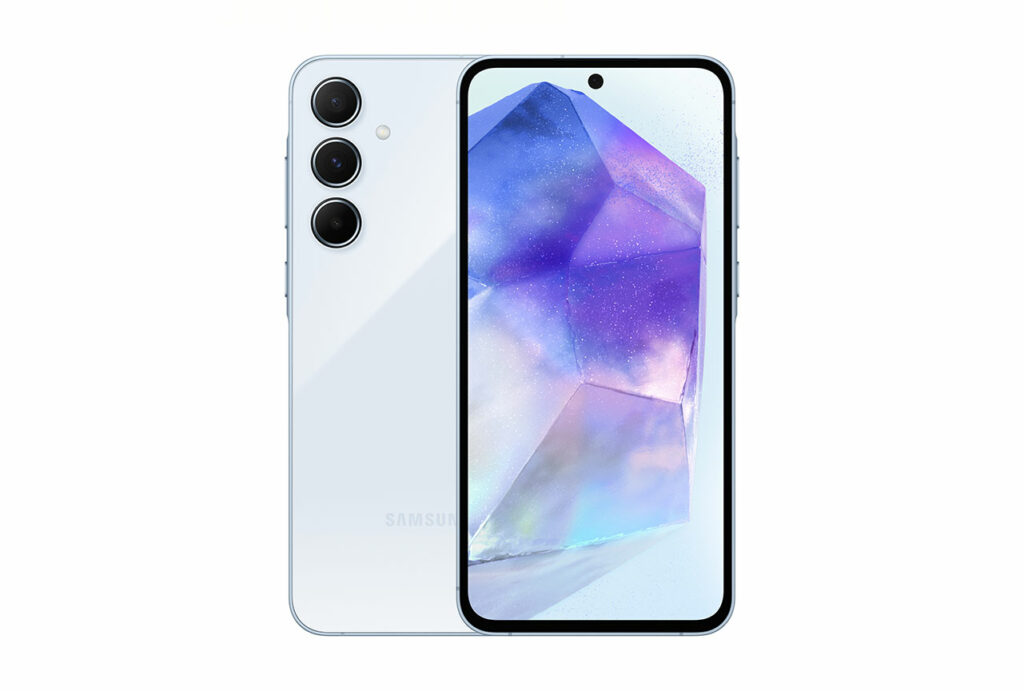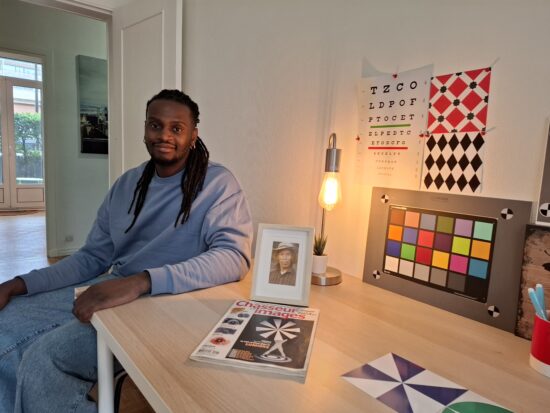We put the Samsung Galaxy A55 5G through our rigorous DXOMARK Camera test suite to measure its performance in photo, video, and zoom quality from an end-user perspective. This article breaks down how the device fared in a variety of tests and several common use cases and is intended to highlight the most important results of our testing with an extract of the captured data.
Overview
Key camera specifications:
- Primary: 50MP sensor, f/1.8-aperture lens, AF, OIS
- Ultra-wide: 12MP sensor, 123-degree field of view, f/2.2-aperture lens
- Macro: 5MP sensor, f/2.4-aperture lens
Scoring
Sub-scores and attributes included in the calculations of the global score.

Samsung Galaxy A55 5G


Use cases & Conditions
Use case scores indicate the product performance in specific situations. They are not included in the overall score calculations.
Outdoor
Photos & videos shot in bright light conditions (≥1000 lux)
Indoor
Photos & videos shot in good lighting conditions (≥100lux)
Lowlight
Photos & videos shot in low lighting conditions (<100 lux)
Friends & Family
Portrait and group photo & videos
Pros
- Accurate exposure, fairly wide dynamic range in bright light and indoors
- Fairly high texture levels in bright light
- Fairly good video stabilization when standing still while recording
Cons
- Some autofocus and exposure instabilities and stepping
- Noise, particularly in the shadow areas of the frame
- Occasionally inaccurate color rendering
- Ineffective video stabilization when moving while recording
- Hues shifts, flare and fusion artifacts
- Limited zoom capabilities, low texture and limited dynamic range in zoom shots
The Samsung Galaxy A55 5G is one of the latest model in Samsung’s A series and the successor to the A54 5G, which we tested previously. The new model shares some camera hardware specifications with its predecessor, and in our tests, camera performance was on a similar level as well. Overall results were pretty average for this class of device, with accurate exposure and fairly good texture when shooting in decent light conditions.
However, in more challenging situations, for example strongly backlit scenes, very low light or scenes with motion, our testers observed a range of failures, including hue shifts around clipped areas, ghosting effects and a noticeable decline of the autofocus tracking capabilities. Surprisingly, our testers found the A55’s bokeh mode to be less accurate, with more subject segmentation errors and activation failures, than on the predecessor.
The lack of a dedicated tele camera module meant that tele zoom image quality was quite limited. In terms of ultra-wide, the A55 offered a slightly wider dynamic range than the A54 but exposed higher noise levels, especially in the shadow areas of the frame. In addition, color rendering was less pleasant, with some color spread. In video mode, stabilization was not quite on the same level as the best-in-class devices, for example, the Apple iPhone 15 Pro.
Test summary
About DXOMARK Camera tests: DXOMARK’s Camera evaluations take place in laboratories and in real-world situations using a wide variety of subjects. The scores rely on objective tests for which the results are calculated directly by measurement software on our laboratory setups, and on perceptual tests in which a sophisticated set of metrics allow a panel of image experts to compare aspects of image quality that require human judgment. Testing a smartphone involves a team of engineers and technicians for about a week. Photo, Zoom, and Video quality are scored separately and then combined into an Overall score for comparison among the cameras in different devices. For more information about the DXOMARK Camera protocol, click here. More details on smartphone camera scores are available here. The following section gathers key elements of DXOMARK’s exhaustive tests and analyses. Full performance evaluations are available upon request. Please contact us on how to receive a full report.
Photo
Samsung Galaxy A55 5G
169
For scoring and analysis, DXOMARK engineers capture and evaluate more than 2,600 test images both in controlled lab environments and in outdoor, indoor and low-light natural scenes, using the camera’s default settings. The photo protocol is designed to take into account the main use cases and is based on typical shooting scenarios, such as portraits, family, and landscape photography. The evaluation is performed by visually inspecting images against a reference of natural scenes, and by running objective measurements on images of charts captured in the lab under different lighting conditions from 1 to 1,000+ lux and color temperatures from 2,300K to 6,500K.
Zoom
Samsung Galaxy A55 5G
169
DXOMARK engineers capture and evaluate over 400 test images in controlled lab environments and in outdoor, indoor, and low-light natural scenes, using the camera’s default settings and pinch zoom at various zoom factors from ultra wide to very long-range zoom. The evaluation is performed by visually inspecting the images against a reference of natural scenes, and by running objective measurements of chart mages captured in the lab under different conditions from 20 to 1000 lux and color temperatures from 2300K to 6500K.
Video
Samsung Galaxy A55 5G
159
DXOMARK engineers capture and evaluate more than 2.5 hours of video in controlled lab environments and in natural low-light, indoor and outdoor scenes, using the camera’s default settings. The evaluation consists of visually inspecting natural videos taken in various conditions and running objective measurements on videos of charts recorded in the lab under different conditions from 1 to 1000+ lux and color temperatures from 2,300K to 6,500K.



